Soil seed banks

The soil seed bank refers to the various seeds that are ‘stored’ in the soil of most ecosystems. Soil seed banks have always attracted interest because of the 'reservoir' of weed seeds in the soil and the economic implications of these. However, more recently ecologists and conservationists have looked at the role of seed banks in woodland and forest regeneration; and it may be that they can play a role in the rehabilitation of degraded ecosystems.
Soil seeds may be placed in one of two broad categories
- Transient species – where a seed only remains viable within the soil for a short period, perhaps only to the next opportunity for germination. For most purposes, seeds that remain viable for a year fall into this category i.e. for one germination season.
- Persistent species – seeds that can remain viable within the soil for a longer period of time. Those that survive for between 1 and 5 years are termed short term persistent, whilst those that can remain viable for more than a year are termed long term persistent.
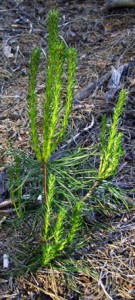
An example of a species that can survive in the soil for years is fat hen or lambs’ quarters (Chenopodium album). The seeds of this plant can certainly remain for viable for forty years or longer. One feature of many persistent seeds is that they are (often) very small. This may seem somewhat counter-intuitive, in that as they have a small food reserve, one might expect that they would use it sooner than a seed with a larger supply of stored food materials (starch, oils etc). However, it has been suggested that being smaller confers the selective advantages of being buried easily – simply by ‘slipping between the cracks’, and also of avoiding predation by herbivores. Contrast with a large seed which would ‘need’ a animal to bury it or would offer a tasty morsel for a squirrel or similar.
A plant such as Fat hen is in marked contrast to a plant such as the corn cockle (Agrostemma githago). Corn cockle was a slender pink flowered weed of wheat fields in the 19th century. It is thought its seeds were included in the harvested wheat and re-sown the following season. It is now rather uncommon (and found in fields, roadsides, railway lines, waste places) due to changes in agricultural practice – the sowing of winter wheat, which is harvested before the corn cockle can flower or set seed.
In practice, a soil seed bank will contain both transient and persistent species. When ecosystems are damaged, for example, by fire, flooding or indeed agriculture the soil seed banks are vitally important in the re-vegetation / regeneration of the area. Initially, various opportunistic / ephemeral / ruderal species e.g. rose bay willow herb may be present but a well stocked soil seed bank allows for the development of a species-rich ecosystem - through succession. The ‘richness’ of woodland seed banks has been demonstrated, for example, by Erenler, H. E. et al. They conducted germination trials from soil cores taken from (two depths in) ancient woodlands. Seeds from some 81 different species germinated, though soft rush / common rush (Juncus effusus) accounted for some 80% of the emergent seedlings.
The persistence of soil seed banks is one of the reasons that the translocation of soil is sometimes said to be more successful at creating a new wood than planting a new wood on existing soil. This strategy is sometimes suggested when a valuable habitat (e.g. ancient woodland) is to be destroyed (e.g. because of motorway or railway construction). However, there is no guarantee that a similar habitat can be recreated. Soil translocation is used because a soil seed bank contains a wide variety of species.
However, there is no guarantee that a similar habitat can be recreated. Soil translocation is used because a soil seed bank contains a wide variety of species.
It is possible that the soil seed bank may contains seeds of species associated with ancient woodlands - though this may not be the case as ancient woodland species may not reproduce by seeds deposited in a seed bank. If soil translocation is attempted then it should take place in late autumn/early winter, when plants (typical of ancient) woodland are dormant. Ideally the soil would be removed so that the layers of soil remain intact and disturbance of the soil ‘structure’ is minimised. Removal of soil is, however, very difficult because of the presence of tree roots etc., and as the soil is scraped up the layers are mixed. This mixing affects the associations between soil microbial communities and the plants growing in the undisturbed soil.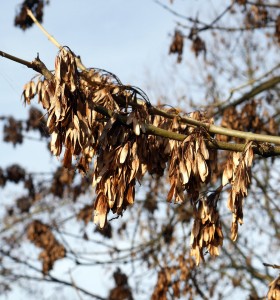
On a slightly different note, there are now a number of specialised, artificial seed banks - such as the Kew's Millennium Seed Bank - which is centred on Wakehurst Place in Sussex. The Millennium Seed Bank project is the largest 'ex situ' plant conservation programme in the world. Given the threats to many plant species, seeds of threatened plants are being saved and conserved for future use. When the seed arrive, they are cleaned and their identification confirmed. They are then dried, repackaged and stored in very cold conditions - so their metabolic rate is very, very slow.
One example of their work has been the collection over 150,000 ash seeds. These will be a resource for researchers and conservationists dealing with the threat of ash dieback (Chalara fraxinea). This work forms part of the National Tree Seed project.
Comments are closed for this post.
Discussion
[…] at woodlands.co.uk tells us about ‘soil seed banks’. Growers and farmers know very well how seeds can live in soil, ready to germinate when conditions […]
Might be of interest
http://www.fields.co.uk/creating-a-wild-flower-meadow/
We have planted a wildflower meadow this year (not our first) but this time we have been inundated with self seeded bellbind and turnip (from a previous crop). This, together with relentless attacks from pigeons, rabbits and everything else has resulted in the millions of meadow grass seeds and annual and perennial wildflowers being very patchy and non existent in places. We have witnessed the targeting of corn marigold. One day it is there the next gone. None of the 74 species of perennial has yet been spotted as having germinated at all. The new area is approx 4 acres.
We are mainly scared by the self seeded bellbind as we realise that it is a perennial and will simply spread relentlessly unless we use a weed killer which we are reluctant to do. Any suggestions?
Kind regards,
Kathy Matthews
Our grass at work was cut throughout the year for the first 20 years; for the last 10 years, we have left the areas around the daffodils till they have fully died down, to feed the bulb, cutting only in late summer and have noticed an increasing range of wildflowers, with obvious starters of Daisies and Dandelions, Buttercups then Plantain and Field Wood Rush, both White and Red Clover, Black Medic and Common Vetch, Cinquefoil, Common Mousear, Hawkweed Mousear + Catsear, Speedwell (Germander and Thyme-leaved)and culminating in recent years with Orchids. None of these were planted, so, after 20 years of mowing………where did they come from?
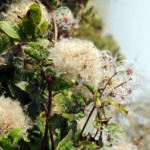
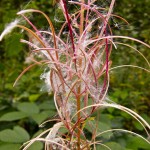
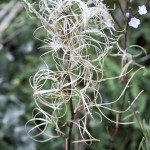
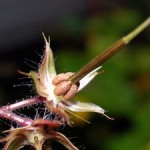

[…] storm created glades and open areas – which allowed dormant seeds (held in the soil’s seed bank) to germinate. Light and warmth flooded into areas that had been dark and chill for many years. […]
The Great Storm of 1987 – 30 years on. | Woodlands.co.uk
19 October, 2017